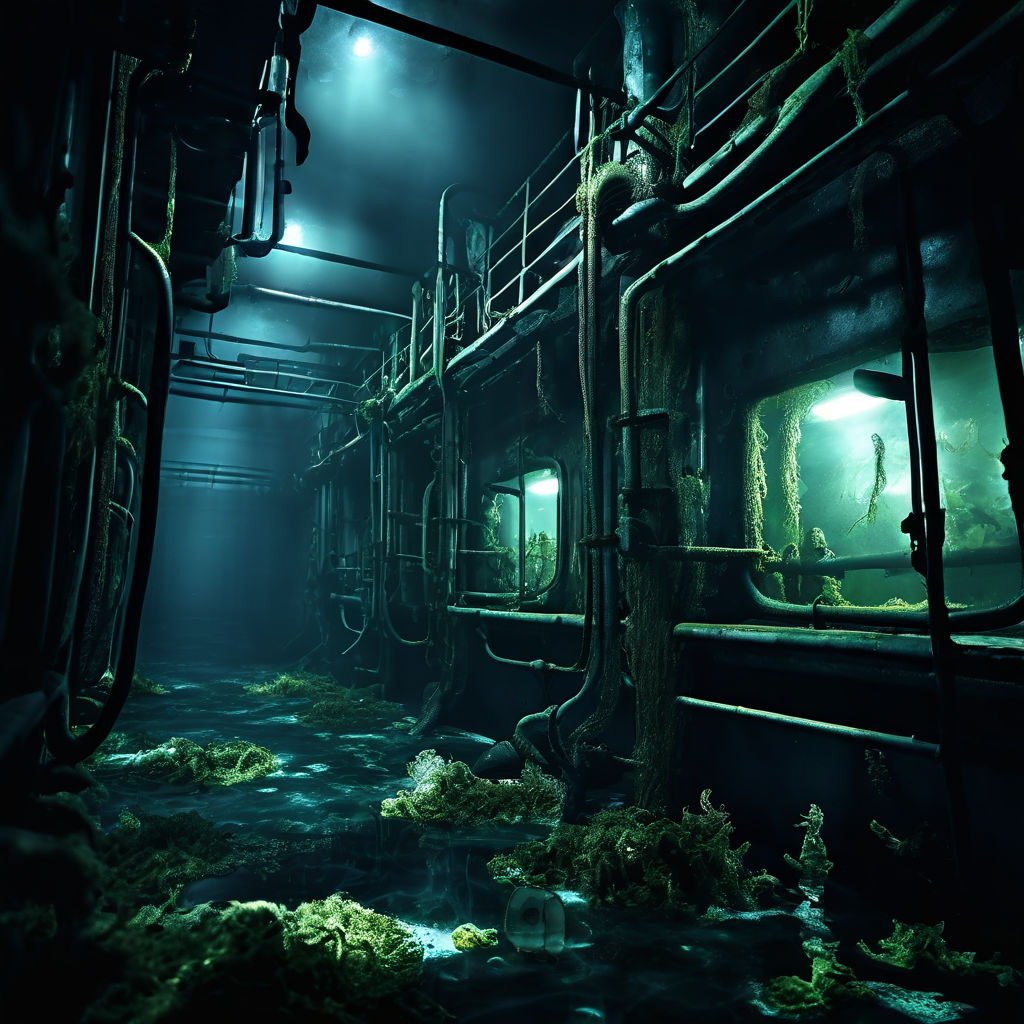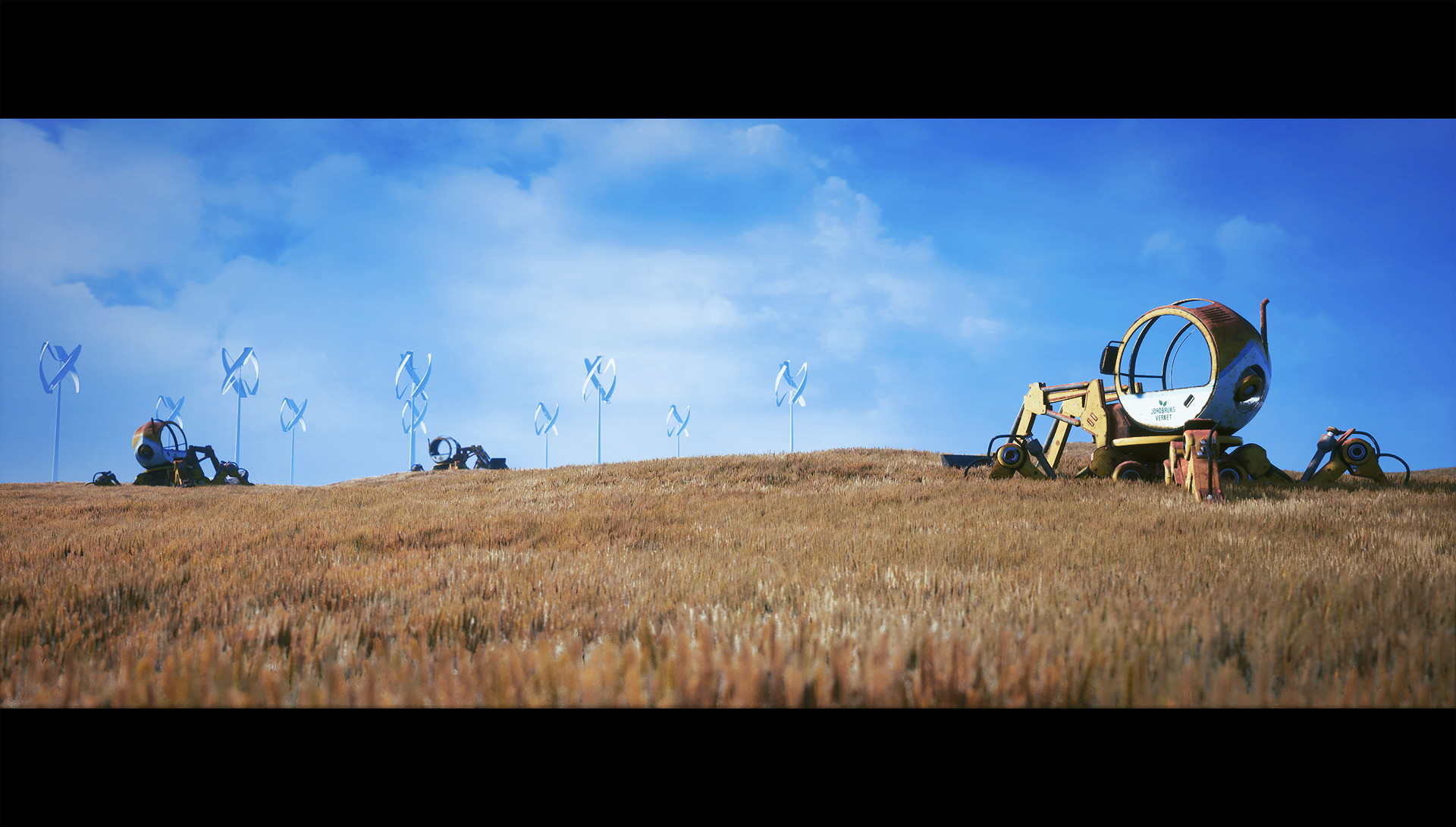Art by Wiktor Öhman, artstation.com/disting.Nation/community name: The Fennoscandian Commonwealth (FSC), aka. Fennoskandia
Demonym: Fennoscandians, Scandies, Fenns, Fensker.
Population (optional): 14 million.
Location: The FSC is located on the peninsula of Fennoscandia, the now much less landlocked landmass encompassing the old regimes of Sweden, Finland, Norway and parts of Russia. Previously connected to the European mainland through Russian Karelia, the consequences of sea level rise, snow melt and destabilisation of tundra soil led to several landbridges collapsing into the ocean. At the time, only two landbridges remain to what was once Russia, known as Fort Bernadotte and Point Pasi, with Fort Bernadotte being the largest.
Battered from war, plunder and the collapse of the Atlantic meridional overturning circulation (AMOC), Fennoscandia is a rough and rugged land with cold, wet winters and hot, wet summers. The climate which once saw average temperatures 10 degrees higher than in Siberian and North American climates along the same latitude now experience similar weather patterns, albeit with the moisture of the Baltic Sea enforcing a great degree of rainfall upon the peninsula. As such, Fennoscandia remains a green and lush land with large forests that after centuries of overexploitation have finally begun to reproduce some traits of old growth. Access to freshwater of (mostly) drinkable quality makes the FSC a large exporter of drinking water as well as produce and timber. Small communities all along the shore also engage in fishing activity in certain parts of the year.
The winters can, however, be quite terrible, and the loss of the AMOC not only cooled the seas significantly in the region, but also deprived the oceans of the nutrient overturn from the other side of the Atlantic. Ironically, however, with climate change at large, the temperatures experienced after the loss of the AMOC are not too dissimilar from the ones experienced over a century ago, albeit with harsher transitions. While the people will find any reason to complain about the weather, much of the flora and fauna are at least for the time being happy that winters actually freeze over again.
History: The Ancestor nations of Sweden, Norway, Denmark and Finland, the countries that claimed the borders of what at the time was known as Scandinavia, Fennoscandia and the Nordics, were collectively disbanded in 2047 following the Immigration Wars (“Innvandrerkrigene”), a series of civil wars, conflicts and resource disputes after the massive influx of populations from the sea-swallowed Denmark and most of the Baltics and Polish-Germanic Europe. In the years leading up to the Immigration Wars, the extreme overconsumption of the Nordic countries had reared its terrible head: As global trade began to break down as droughts, famine, political unrest and wars mounted all around the globe, the Nordics came to realise that they had been completely reliant on imports for nearly a full generation. Multiple efforts to revitalise local agriculture and move away from globalised industrial agriculture that required huge imports of seeds, fertiliser components and machine parts had for decades been met with scoffs, apprehension and even laughter. Now the time had come, and sure enough, the highly technological agriculture of Scandinavia completely broke down. Monocrops could not be sustained without immense use of pesticides, fertiliser and combines, all of which were in high demand elsewhere. As food imports became scarce, famine broke out. The cities emptied like water through a sieve as people desperately moved out to the countryside in search of arable land, only to find that the land had become overgrown after decades of neglect. The very same winter, millions would perish from disease, starvation and fighting.
Just when the governments regained some weak semblance of control, seawalls around the European North began to collapse. Countries like Denmark, the Netherlands, Belgium and parts of Germany and Poland were swallowed in mere days as water flushed in across the continent. Those who got up in time migrated north and south in search of higher ground. In Scandinavia, the unfair selection of who got to cross the border favoured the Danes over the others and people smuggling across the Baltic Sea and the Karelian land bridges exploded. The colossal influx of people in such a short time and public outcry over discriminatory immigration practices led to mass riots which, for the many already strained governments, proved the final nail in the coffin. One by one, the governments of Scandinavia began to realise that they had little to no power beyond the capital regions – which had already been moved several times from rising sea levels – and for the next thirty years, no one managed to resume control of the whole region. The scattered populations all around Fennoscandia became somewhat isolated from one another in between valleys, forests and mountains, especially after global communications broke down. Old railroads and highways still connected communities with access to transport, and eventually some semblance of regional government was reestablished. However, after so many decades apart, many communities had founded their own ways of living, and fearing that centralised power once again would bring about a rise of capitalism and industrialisation, the Fennoscandians instead opted to remain largely separated, only loosely interconnected through a commonwealth coalition – an All-Thing. Society would organise itself without a centralised state, and only regional issues would be lifted to the All-Thing. With time, the people have begun falling back into the rhythm with the seasons and nature.
Culture and beliefs: The Scandies are plagued strongly by one emotion: shame. After nearly a century as among the greediest consumers per capita on the global scale and rampant neo-colonialism under the guise of diplomacy, the total collapse of the social democratic model incited a complete opposite shift. Social developmentalism has become a no-word, and the burning of fossil fuels is the greatest sin. Due to the fragmented nature of the FSC, practices vary by region, but these are the core tenets virtually seen everywhere. All transport is either human or animal-powered or public.
The people of Fennoscandia share few collective goals and hold little to no national identities beyond their immediate villages or regions. The demonym of Fennoscandian is only a term used in conversation with outsiders. Among themselves, they are Jämtarar, Innlendere, Lappi to name a few. Many have turned to various religions with the years: Islam, Christianity, Buddhism, New Wave Åsatru… Yet many also shun organised religion and instead form spiritual communities with mixtures of everything. Some form witch covens, others druidic circles, some cults to all sorts of new and old Pagan beings. Yet while this may sound free, the tendency is very much that each community sticks with their own system of belief, and within any group there can be little room for deviation. Others, typically larger communities, seem more open to individual expression.
Myriads of languages are spoken, only strengthened by the lack of centralisation. There is no guarantee that villages on each side of a mountain with understand one-another. Typically, however, roads and water connect two ends well enough that the larger population centres share a lingua franca – a sort of pidgin between the Scandinavian languages plus Finnish with slang from Polish, German, Dutch, Latvian and Lithuanian. The whole ordeal of language is a strange soup of words and mince.
For thousands of years, most people in Fennoscandia were farmers. After a brief intermediary period of industrial overconsumption, most people have returned to that occupation, only in a very different climate from their ancestors. Where before only barley, rye and potatoes would grow, temperatures allow for different wheats, rices, squashes, roots, fruits, legumes and much more.
The FSC can be further divided into four large regions which each have their own Things to discuss matters between the multitude of the different communities within them. While all of is highly decentralised, each region shares some commonalities across communities that keep them different from their neighbours.
- The Jämtland League: Encompasses the myriad of communities inhabiting the Scandes, the mountain range dividing Sweden and Norway. A large swathe of their settlements have over the last few decades fallen until the influence of the Luddic Rebellion, a quasi-religious movement which seeks to undo all industrial age technology and return to a pre-17th century way of life. Due to the number of mountains and the disconnectivity between communities, this region much less describes a set of people than the leftovers that could not be categorised into any of the other regions.
- The Southern Communes: A moniker for the coastal communities that make up the south of what was once Sweden and Norway. Due to the presence of a lot of good farmland, this region hosts a great number of settlements and commerce. Communities engage in trade with the rest of Europe and political agreements and disagreements run rampant. The Luddic Rebellion has a significant presence here too, but competes with many other voices like the Technocrats, who favour a return to the pre-collapse age or at least an adoption of technology to a greater degree; the Witch Covens, who despise technology even more than the Luddic Rebellion; and the Communists, who disagree with the anarchist way of living and want to reunite Sweden and Norway under a new centralised rule. Political disagreements plague the Thing meetings to no end.
- Lapland and the Kola: As industrialisation destroyed the land of their stories and ancestors, the many Sami of Northern Fennoscandia, pushed to the brink of extinction by nation-building policies in the 19th and 20th century, were eventually allowed some freedoms as the centralised State realised its mistakes as part of the larger identity politics movement in the late 20th and early 21st century. After the collapse of the Fennoscandian state, there were hardly any Sami left who lived as their ancestors had two hundred years prior. Those who had moved to the cities, never came back; however, new people came in their stead, pushed northwards by the competitive chaos of the south. While they would never live as the Sami had before, some practices like animal herding, foraging, fishing and swidland agriculture would persist.
- Suomen: Most of what was once Finland. While they are also a highly diverse region, Suomen remain separate from their fellow Scandies by virtue of them being the region least affected by the Immigration Wars, a holdover from the policies of an isolationist military junta government in the late stages of Finland’s collapse. This same government built Fort Bernadotte and Point Pasi, which now demarcate the border with the outside world. Within these forts, Suomen maintains some form of centralised leadership based around networks of chiefs led by a queen – yet another holdover from a bygone age. Suomen in general are welcome everywhere in Fennoscandia, but Bernadottans and Pasians are generally distrusted for their monarchist allegiance.
Share a bit about the culture and beliefs of the people(s) in your nation/community. Feel free to also write about people’s ways of life and their motivations.
Science and technology: Technology holds wildly different status depending on where one is. The timeless general trend is that the further one moves from urbanisation, the less technology is used; this is also amplified by the presence of the Luddic Rebellion. However, urban communities with connections with the Witch Covens can also be extremely anti-technological. The majority of military technology is concentrated in Fort Bernadotte and Point Pasi, and consists of more or less well-maintained combat equipment from thirty or so years ago: combat rifles, armour, vehicles, ships and aircraft. Military equipment elsewhere boils down to whatever the community in question has managed to scavenge from the surroundings.
Civilian technologies are generally limited to modes of power generation, if that. In some communities, power is exclusively generated through solar and wind power, using small-scale equipment that powers their immediate needs. Fossil fuel-based energy generation is seen as a massive crime in all but the most technocratic circles, and will certainly evoke grievous sanctions. Agriculture emulates pre-industrial practices, which is why the vast majority of the population are farmers. In general, small tractors and such are in use, but human and animal labour are largely dominant.
Aquaculture in the old Norwegian sense has long since broken down; like industrial animal husbandry, it was entirely dependent on the exploitation of global resources to function, and thus was among the first sectors to break down when global trade collapsed. Aquaculture now produces seaweeds and species that feed on algae and detritus, like the carps, crabs and shellfish.
Transport-wise, public transport has been maintained fairly well: Trains, buses and ferries ship people and goods around the country when able. However, due to their low numbers, travel does not happen often. Day to day transport is done on foot, by boat or with animals or small vehicles. Cars have gotten a terrible reputation over the past century and are generally viewed as symbols of selfishness and greed. They do exist, however, and many of the well-to-do, especially technocrats, drive cars on the regular. Ships are battery-powered where available and are otherwise powered by the wind.
Characters:
- Jannicke Hjelström, speaker for the Røros Commune.
- Vigdis “Roedeer” Grahn, acolyte of the Witch Coven of Falun City.
- Sergeant Marttu Letirinnen, NCO of the Reconaissance Squad, First Engineers Company, Fort Bernadotte.






 Artist: Dominic TT,
Artist: Dominic TT,  Artist: Yuhong Ding,
Artist: Yuhong Ding,  , Artist: Yuhong Ding,
, Artist: Yuhong Ding, 